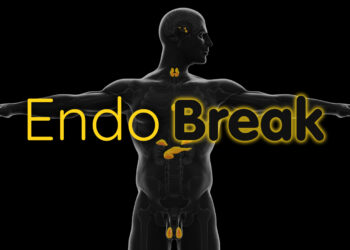TOPLINE:
A recent study showed that a home-delivered physical activity intervention supported by wearable mobile health technology may help patients with newly diagnosed type 2 diabetes (T2D) adhere to physical activity routines, potentially leading to improvements in A1c levels and systolic blood pressure outcomes.
METHODOLOGY:
- Researchers conducted a randomised controlled trial to assess the feasibility of smartwatches and app-based feedback in helping patients with T2D to maintain moderate to vigorous physical activity from home.
- They included 125 adults (mean age, 55 years; 48% women; mean duration of T2D, 13 months) recently diagnosed with T2D and randomly assigned them to either the intervention group or the active control group.
- All participants codesigned their 6-month physical activity plans to progressively achieve 150 minutes of moderate to vigorous intensity exercise per week and increase their daily physical activity, supported by an exercise specialist–led behavioural counselling service that was delivered virtually.
- The intervention group used biofeedback from wearable devices to support the development of personalised physical activity programmes, whereas the active control group participated in the same intervention without the use of wearables.
- Primary outcomes were recruitment rate, retention rate, and adherence to exercise; exploratory outcomes were A1c levels and systolic blood pressure at baseline and 6 and 12 months.
TAKEAWAY:
- The recruitment rate of the trial was 93%, with a retention rate of 82% at 12 months.
- Participants in the intervention group were 10 times more likely than those in the active control group to start exercising (odds ratio [OR], 10.4; 95% CI, 3.4-32.1); they were also more likely to maintain purposeful exercise at 6 months (OR, 7.1; 95% CI, 3.2-15.7) and 12 months (OR, 2.9; 95% CI, 1.2-7.4).
- Moreover, a higher proportion of participants in the intervention group achieved more than 150 minutes of moderate to vigorous physical activity per week at least once than those in the active control group (6 months, 52% vs 17%; 12 months, 28% vs 11%).
- Preliminary clinical results indicated a possible positive impact of the mobile health–supported physical activity intervention on A1c levels and systolic blood pressure.
IN PRACTICE:
“We found that using biometrics from wearable technologies offered great promise for encouraging people with newly diagnosed T2D to maintain a home-delivered, personalised exercise programme with all the associated health benefits,” one of the authors of the study said in a press release.
SOURCE:
This study was led by Katie Hesketh, University of Birmingham, Birmingham, United Kingdom, and was published online on March 26, 2025, in BMJ Open.
LIMITATIONS:
This study was not powered to definitively assess the efficacy of the intervention in participants recently diagnosed with T2D. Imbalances in demographic characteristics were observed between the intervention and active control groups, and blinding was not possible due to the nature of the intervention. Moreover, it is unclear whether participants in the active control group consistently wore the blinded heart rate monitor during all purposeful exercise sessions.
DISCLOSURES:
This study was supported by a UK-Canada Diabetes Research Team Grant from the UK Medical Research Council and Canadian Institutes of Health Research. The authors declared having no relevant conflicts of interest.
This article was created using several editorial tools, including AI, as part of the process. Human editors reviewed this content before publication.
Source link : https://www.medscape.com/viewarticle/smartwatch-motivates-patients-diabetes-stay-active-2025a10007pp?src=rss
Author :
Publish date : 2025-04-03 12:00:00
Copyright for syndicated content belongs to the linked Source.














